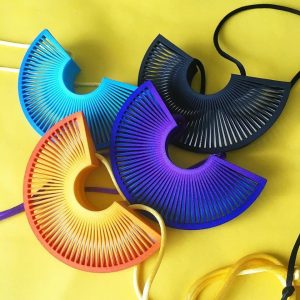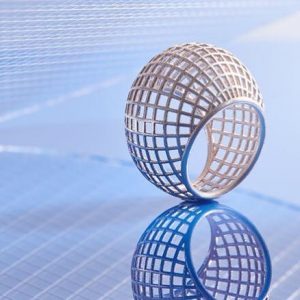
3D printing, technically referred to as additive manufacturing, is often heralded as the manufacturing process of the future. This is because it is a very flexible process, and is able to produce forms that cannot be manufactured using traditional methods. In theory anything that can be represented as a 3D model in a CAD file can be produced by 3D printing, and developments over recent years mean that a huge variety of materials can be used. For example polymers and metals are typical, but also concrete, paper, food, and bio-matter.
3D printing is popular in the design studio as a quick and simple method for producing prototypes, and for this reason it is sometimes referred to as rapid prototyping. When designers communicate, drawings can be of limited use with clients who are not experienced in spatial reasoning, but a 3D printed model can quickly communicate the look and feel of a design.
It is also gaining traction as a method for producing working components, but to-date its application is limited for a variety of reasons. It is slow and relatively expensive so it generally is not well suited to mass-manufacture, and it produces objects which are mechanically inferior to those produced using traditional manufacturing, so typically is not used for producing load-bearing components.
However, for low-volume, high-value manufacture, the geometric potential of 3D printing is of great interest, because it introduces new possibilities with respect to the types of shapes that can be realised. For example
 in medicine bespoke parts can be produced based on scans of patients, for prosthetics, skin grafts, or replacement bones
in medicine bespoke parts can be produced based on scans of patients, for prosthetics, skin grafts, or replacement bones- in product design it supports mass-customisation so that every consumer can purchase products that are unique to them
- in aerospace it makes it possible to replace complex configurations of parts with single components, with no assembly required
- in jewellery design new forms can be produced that are physical experiments in shape, light and colour
[Images: © 2018, Lynne MacLachlan]

Leave a Reply